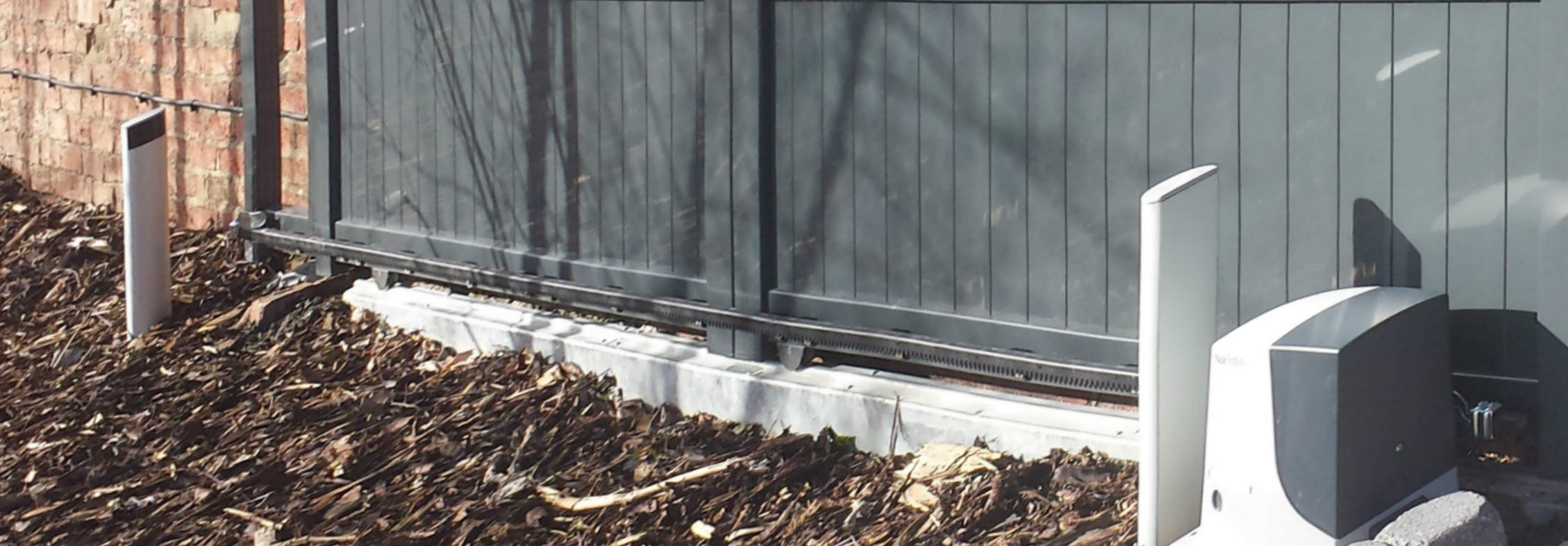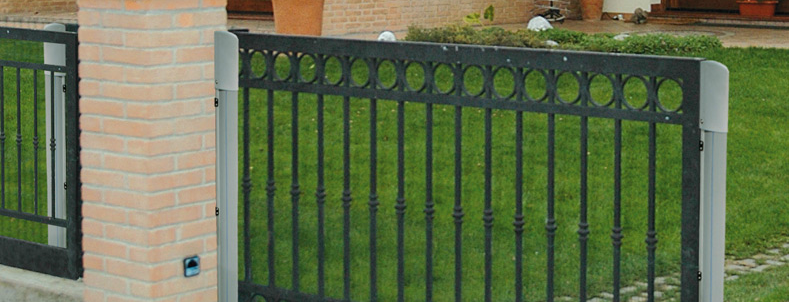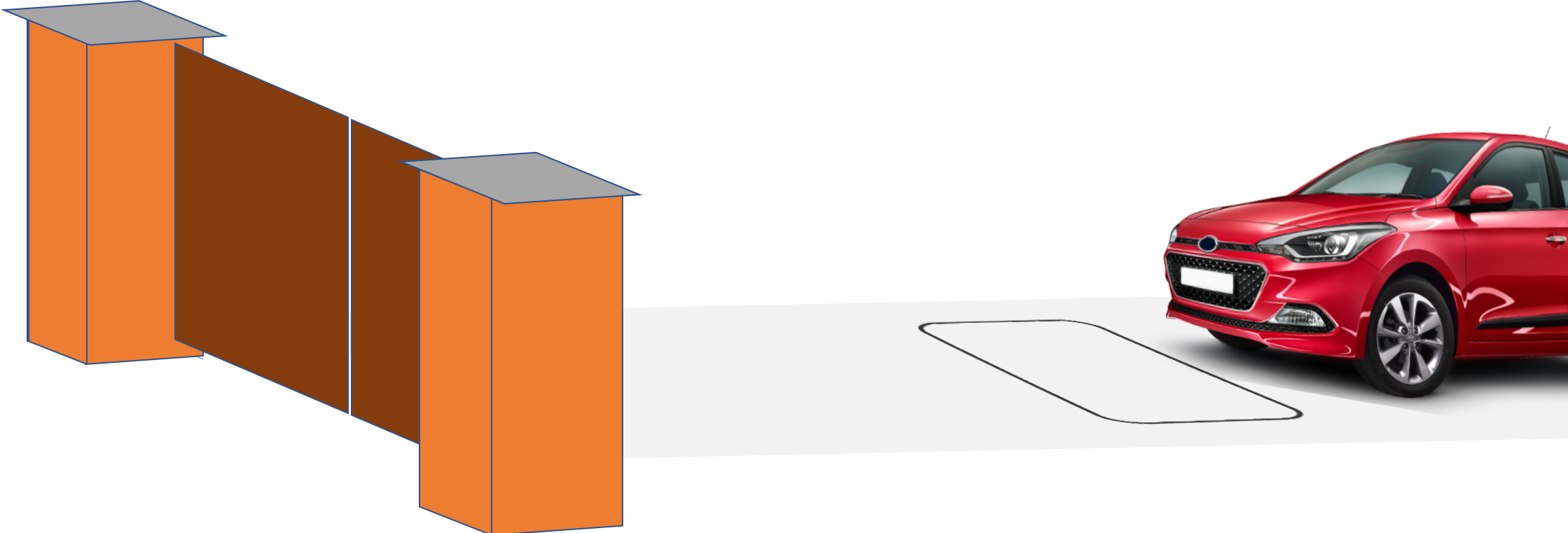
How Do Automatic Gate Sensors Work?
Automatic gates can theoretically be installed at the entrance to many driveways without sensors to control their operation.
But without sensors for ease of use are they simply dull machines that require instruction from us before they do anything?
And without sensors for safety, could their unchecked movement potentially be dangerous?
This article covers the reasons why electric gate sensors and controls provide vital safety and almost intuitive automatic operation without human instruction.
What Are Automatic Gate Sensors?
Without different types of sensors to recognise objects in the path of moving gates, automatic gates can be dangerous. And without sensors to provide the signals controls need to automatically tell electric gates to start to open, they won't do anything until they receive an instruction from a radio transmitter, gate release button or similar pressed by a human operator.
Automatic sliding gates and swing gates open and close with no intelligence or thought. They just open and close blindly.
To open the gate, you normally send a signal from a handheld transmitter, gate keypad or gate release button inside the house or mounted inside the gates.
But sensors will detect objects and instruct the gates to stop or start depending on the circumstances and the job the sensor is doing.
Why Do Automatic Gates Need Sensors?
Gate safety

Gate automation systems are programmed to start to operate following a 'gate open' command and then only stop when the gates are fully open. After a predefined period with the gate open, they then start to shut and don’t stop until they’re fully closed.
If someone with a radio transmitter fob is always on hand to operate the gates with their transmitter, you don’t need sensors. But that’s a completely unrealistic situation.
There will be many times when automatic gates are approached by people who have no way to control the gates' motion.
Visitors, delivery people, neighbours, children and pets are all unlikely to have their own gate remotes.
And if you’re driving your car through gates that start to close, do you have time to fumble for your gate transmitter and press the gate open button to stop the gates before they hit your car?
Sensors that detect if someone or something moves into the path of moving gates will automatically instruct the gate to stop moving until the person, animal or object (eg your car) is safely out of the danger area.
Ease of use
With the installation of different types of sensors, a vehicle arriving at the right point inside the gates triggers them to start opening automatically. So, instead of having to find your gate remote or wait for someone in the house to press a gate release button, the sensors detect your arrival and open the gates for you.
How Do Gate Automation Sensors Work?
There are four commonly-used types of automatic gate sensors for safety or ease of use. These can basically be described as motion detectors, pressure sensors and electromagnetic sensors.
Gate safety sensors
1) Infrared photocells

Infrared safety photocells come in pairs where one transmits a narrow beam of infrared light that is invisible to the eye.
The second photocell is installed so that the beam hits it. If the second photocell detects the infrared beam, nothing happens.
But if the beam is interrupted by the movement of anything between the sensors, the second photocell doesn’t receive it. This presence of a person or object in the danger area, causes the sensor to instructs the automation system control panel to stop the gates and sometimes even reverse them.
So, if the installation of a pair of infrared gates safety photocells is on either side of your drive inside your gates, they will sense anything that passes between them and stop the gates moving.
If they’re positioned far enough from your gates so that the opening gates don’t interrupt the beam, then they won’t cause their own operation to be interrupted. But if a person inside the gates gets too close while they're in motion, they break the beam, and the gates stop.
Safety photocell installation outside the gates ensures that anyone or anything trying to enter while they are closing breaks the beam and reverses their motion.
Reflective photocells work like PIR motion detectors. They send an infrared beam from the first unit which is reflected back from a mirror in the second unit. Their function is the same as active photocells but the first unit both sends and detects the infrared beam.

2) Safety edges
Photocells are used to detect the movement of a person or object into the path of a moving gate and prevent it from happening.
But safety edges only function when a moving gate has come into contact with something or someone. They are made up of a long strip of compressible rubber profile with a roughly circular or U-shaped cross section.
This is mounted along an aluminium bracket attached to the gate edges or places where a moving sliding gate or swing gate could crush anything caught in it, or cause a shearing action against a fixed object as it moves.
The pressure of contact with anyone or anything with the safety edge rubber profile completes an electric circuit. Effectively acting as pressure sensors, safety edges must come into contact with someone or something before they trigger the control panel to stop and reverse the gates.
Gate Operation Sensors For Ease Of Use
Automatically controlling when an electric gate opens to let someone out is not recommended using photocells, as the movement of animals can trigger the gates to open. So, if only want approaching cars exit automatically, what are the alternative methods that only detect vehicles?
1) Loop detectors

A loop detector is made up of a small box of clever electronics, connecting wire and a loop of special cable that is buried in your driveway inside your gates. A loop detector uses the principle of electromagnetic induction.
This generates an electrical signal when the magnetic body of a vehicle enters their field.
This then instructs the automation system to open the gates when a vehicle passes over the loop.
2) Magentoresistive vehicle detection
A similar principle is used in magnetoresistive vehicle detection, but these systems don’t require a large loop of cable to be buried in the driveway. Instead, a smaller sensor is installed in the driveway.
Will Having A Sensor On My Automatic Gate Affect Its Security?
Automatic gate security is mostly provided by having your gates closed whenever you’re not using them. They should have an access control system to control access. This allows you to ensure that access is only granted to the right people.

Not having gates across the entrance to your property or having manual gates that are left open, means that you don’t have the barrier to entry that closed electric gates provide. But when gates are opening or closing, they are not as secure and safety photocells make them less so.
Photocells stop the gate moving so someone on foot can use this to gain access as the gates are closing. By interrupting the beam of infrared light passing between an externally sited pair of photocells, the intruder effectively stops the gates moving and reopens them to make their access easier.
Loops should only be installed on the inside to facilitate automatic exit. This ensures that your electric gates can only be opened automatically from the inside.
If photocells were used for exit control on the inside of the gates, breaking the beam is all that’s required to open the gates.
But gate safety has to be prioritised over gate security. An automatic driveway gate system cannot tell if the person passing through is a member of the household or a miscreant intent on stealing the family jewels.
Without sensors, automatic gates are blind, stupid and potentially dangerous. Adding safety sensors and operation sensors makes automation systems much safer. They can also appear almost intuitive as they can automatically open to let you out as you drive up to them.
Without sensors, you need to provide gate automation systems with instructions to run or stop using remote control transmitters, release buttons or keypads. Safety photocell sensors are an essential part of any automatic gate system, and egress sensors make your life easier without affecting your security.































2 Comment(s)
Say you have sensor at your driveway gate and you are halfway in and by accident someone presses the remote button will the gate start to close or will the sensors pick it up that there is a obstruction in the way
Hello Thank you for your message, could you let us know which type of sensor is fitted to your gates?
Hi manufacturer ., even I want to know your answer for this above request/question by C.Cérfontyne Say you have sensor at your driveway gate and you are halfway in and by accident someone presses the remote button will the gate start to close or will the sensors pick it up that there is a obstruction in the way? I recently got caught and damaged my car one side and broken electric mirror. looking for your reply. Thanks Sanjeev
Leave a Comment